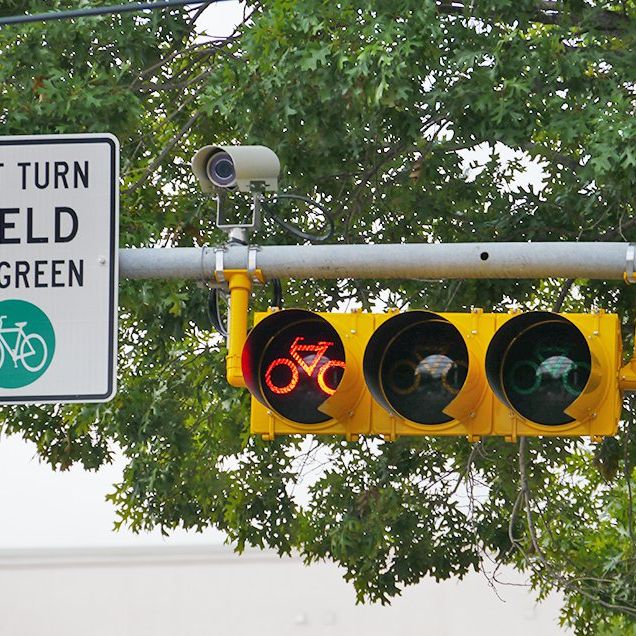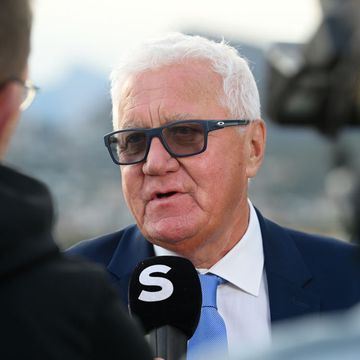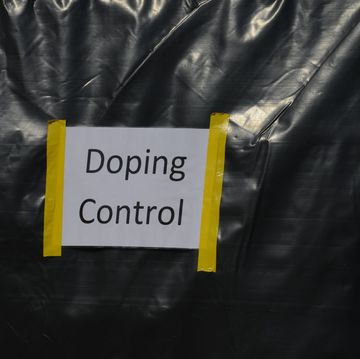Austin's Transportation Department is adding 12 new bicycle-specific signals to traffic lights around the city in hopes of creating a safer commute for cyclists. (Looking for more memorable moments on the bike? Take a look at our Cyclist's Bucket List.)
Some intersections in Austin already have some form of bike-specific traffic controls in place, such as a dedicated light, and signs directing cyclists to follow nearby pedestrian signals. But the directions were often inconsistent, confusing, and ignored. The city is installing new bike-specific signals on selected intersections to improve and clarify these controls.
RELATED: This Smart Traffic Signal Helps Cyclists Make Every Green Light
"Now these signals will be more consistent and predictable for cyclists and all users," said Aleksiina Chapman, a graduate engineer with Austin's Transportation Department. "These kind of signals are all over Europe, and they work really well. So it's exciting to bring them to the US and to Austin."
A survey by the Transportation Department found that 40 percent of Austinites would ride a bike if they felt safe. Bike Austin Executive Director Mercedes Feris believes the new signals are a step toward safer streets for cyclists.
Trying to get more comfortable with city riding? Here's how to make a safe left turn in traffic:
"The lights will give cyclists a few seconds’ head starts," Feris said. "It'll give bikes a chance to get into the intersection and be more visible before cars turn right into the bike lane. And it'll take away that fear of being in someone's way when there's a lot of traffic, so you won't have to feel the pressure of everyone staring as you start pedaling."
RELATED: 5 Safety Pointers for the Urban Cyclist
The Transportation Department is also collaborating with the University of Texas to study the effectiveness of the new lights. Video cameras will be used to track whether the signals improve safety and compliance, and before and after surveys will reveal whether users understand the meaning of the lights and whether they are satisfied with the changes.
"We'll also be sharing our study with the FHWA [Federal Highway Administration]," Chapman said. "So what we learn here can be used to give us a more robust picture of how to use this kind of system effectively throughout the whole country."
Three signals are already up and running, and the city plans to install the rest over the next two weeks. Chapman says the response to the new lights have been very positive so far, and that Austin will very likely be expanding the system in the future.













